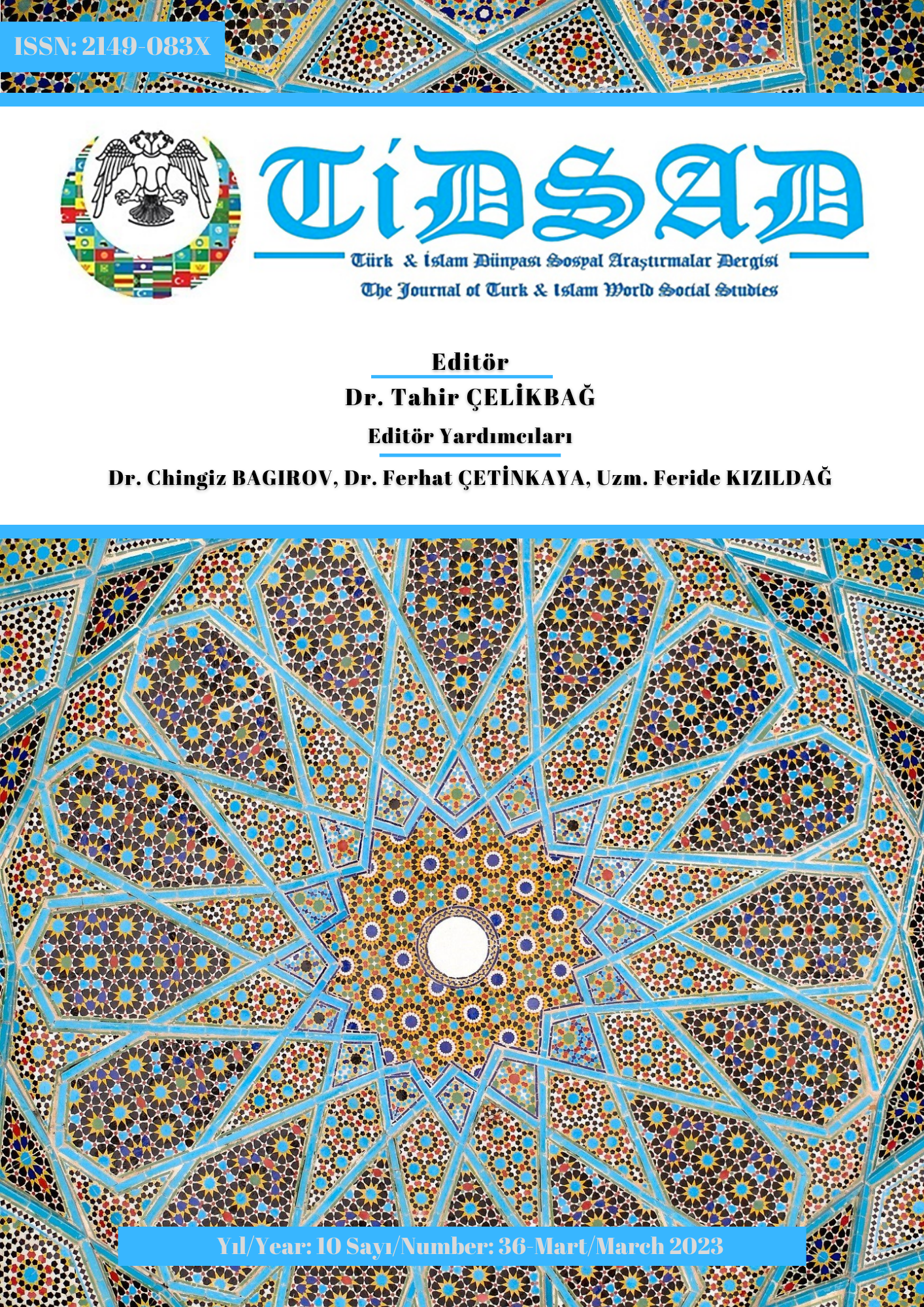Author :
Abstract
Bu çalışmanın amacı, Türk halk müziğinde uzun hava türünün yapısal özellikleri açısından en özgün formlarından olan Gazel formundaki eserlerin yapısal olarak incelenmesidir. Gazel, Türk müziğinin geleneksel makam anlayışını ve melodik karakterini ortaya koyan spesifik bir yapıya sahiptir. Bu çerçevede, çalışmada odaklanılan Gazel türüne ilişkin yapısal özelliklerin analiz edilmesi, özellikle bu türün icra edildiği toplumlardaki müzikal birikim ile müzikal kimlik olgusunun ortaya koyulması açısından önemlidir. Çalışmada yapısal olarak Gazellerdeki, makam, doku, form, ses alanı, perdeler ve süslemeler analiz edilmiştir. Bu başlıklar altında yapılan analizler 15 adet Gazel üzerinden gerçekleştirilmiştir. Araştırma sonucunda Gazellerin; açış/taksim bölümlerinin ud, klarnet, keman, cümbüş ve kanun gibi sazlarla icra edildiği, bünyesinde klasik taksim üslubunu ve halk müziği açış üslubunu birlikte barındırdığı, yaklaşık iki oktavı geçkin bir ses alanı içerisinde ezgisel yapılanma özelliği gösterdiği, belirlenen dönemler arasında makam yapılarının eser boyunca tek bir makama bağlı kalmadan çoğunlukla eser içi dönemlere göre değişkenlik gösterdiği, kullanılan perdeler ekseninde Türk halk müziğinin ses sistemini tamamen yansıttığı, kullanılan geçkilerin hem perdesel hem makamsal olarak yoğunluk gösterdiği, dem unsuru ve değişmeyen şekilde vokal icrayı takip eden melodi ekseninde homofonik bir yapının var olduğu, çok çeşitli form yapılarının olmasına karşın 2-3 ve 4 dönemden oluşan formal yapılanmaların ağırlıkta olduğu sonuçlarına varılmıştır.
Keywords
Abstract
The aim of this study is to structurally analyze the works in Gazel (a form of folk music) form, which is one of the most unique forms of uzun hava (having no measure) genre in Turkish folk music in terms of its structural characteristics. Gazel has a specific structure that reveals the traditional makam understanding and melodic character of Turkish music. In this framework, analysing the structural characteristics of the Gazel, which is the focus of this study, is especially important in terms of revealing the musical accumulation and musical identity of the societies in which this genre is performed. Structurally, the study analysed the makam, texture, form, tessitura, pitches and ornaments in Gazels. The analyses made under these headings were carried out on 15 Gazels. As a result of the research; the açış/taksim (improvization) sections of the Gazels are performed with instruments such as oud, clarinet, violin, cümbüş and kanun, they contain the classical taksim style and folk music açış style together, they show a melodic structuring feature in a tessitura of more than two octaves, the makam structures among the determined periods vary mostly according to the periods within the work without being bound to a single makam throughout the work, It has been concluded that it fully reflects the sound system of Turkish folk music on the axis of the pitches used, the transitions used show intensity both in terms of pitch and makam, there is a homophonic structure on the axis of the melody that follows the ‘dem’ element and the vocal performance in a constant manner, and although there are a wide variety of form structures, formal structures consisting of 2-3 and 4 periods are predominant.
